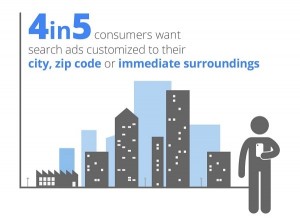
One of the perks of my job is the ability to ask “why” like an energetic preschooler. For me, nothing evokes this question with more enthusiasm than participating in digital experience personalization discussions with Evergage staff and customers. For example,
“We are we going to change this hero image when visitors arrive after their first visit.”
“Why?”
“We need to inform mobile visitors about our mobile app.”
“Why.”
“We need to engage our email subscribers with content about a particular offer.”
“Why!”
These are all very reasonable plans. We hear them from customers all the time. But what transforms the “whys” from questions to statements or exclamations is an unrelenting desire to ferret out the origins of these requirements. The broader goal of these assessments is to assure that brands spend the necessary time to confirm that personalization execution is deeply rooted in broader company strategy.
At Evergage, we’ve established a workshop approach to helping clients connect the dots between strategy and execution. The building blocks are straightforward, but often under-considered. So if you’re planning out your personalization strategy, or even continuing to build on an existing strategy, you can ask yourself these five questions:
1. What are your business goals?
It sounds obvious to determine your goals before you begin any initiative, but we often see that marketers want to dive right in and begin planning personalization campaigns before they have established what they are trying to accomplish.
Do you want to improve customer satisfaction? Are you focused on customer conversions or lifetime value? Do you want to grow customer share of wallet, average order value or revenue per visitor? Do you want to impact the customer service experience by assuring access to relevant content? Knowing your goal is imperative in good personalization planning, as it helps you narrow your focus to those initiatives that will have real impact.
2. How will you measure success?
Measuring impact will not be possible without well-defined key performance indicators (KPIs). Even still, it is surprisingly common for business goals to lack defined KPIs.
Which metrics do you need to impact in order to reach your goals? You may want to examine bounce rate, engagement levels, content consumption, average order value, add-to-cart rate, cart abandonment rate, etc. — depending on your business model. Whatever the metric, make sure you have a strong baseline and reasonable benchmark lift targets to help validate business impact.
3. Who are you targeting?
In order to hit your goals and impact your key metrics, you need to know who you are trying to reach. It can be helpful to think about your visitors leveraging four key areas:
- Situational data: Geographic location, referral source, device and browser
- Attitudes and preferences: Customer interests, lifecycle, affinity, recency and frequency of visits
- True intent: Purpose of visit (browsing products, offer shopping, login, research, etc.) — intent will differ based on your industry
- Profile data: Demographic data, marketing responses, offline data, etc.
The combination of data elements should be used to help you characterize visitors according to different personas. Once you have identified your key personas and validated the corresponding characteristics, you can target those visitors specifically across digital channels and speak to them in a consistent and impactful manner.
4. What are your customer journeys?
Whether the digital experience for your customers follows a specific path or, more likely, a diverse range of touchpoints, summarize them into broader stages. For example, maybe your customers flow loosely through discovery, exploration, use, and inquiry stages.
Then breakdown these stages into groupings of visitors (or segments). For example, within the discovery stage, you can create segments of first-time visitors that arrive to your site from search, email, or social, or you can create segments of loyal customers who review complementary products. When you focus on where the visitor is in his journey, you will be able to assure the experience is relevant to him and that the impact of that experience addresses your business goals.
5. What data sources do I need?
Finally, before you begin implementing personalization, ensure that you have all the data sources you need to be successful. Data should not only support success analysis, but also drive a relevant experience in real time. Whether including market automation, CRM, ESP, BI or other data, make sure to evaluate how online and offline information can help positively shape visitor experience across your digital properties.
We recognize data integration is typically a process. The best way to advance your data strategy is to start simple and build from there.
Final Thoughts
Armed with your business goals, success metrics, personas, journeys and a data-centric engagement approach, you are truly ready to plan your personalized experiences. Answering these five questions shouldn’t be boring or laborious; we expect you’ll find the process informative, fun, and, most importantly, impactful.
Business & Finance Articles on Business 2 Community
(83)








